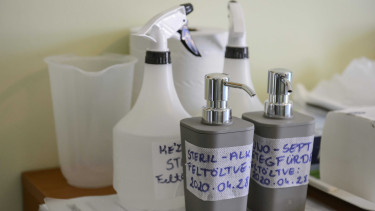Flu epidemic not over but showing retreat in Hungary

The NNK said that on the tenth week of the year, 275,700 people went to the doctor with symptoms of severe acute respiratory infections (down from 295,400 a week earlier), of whom 62,900 (22.8%) were diagnosed with influenza-like illness, in contrast with 65,700 (22.2%) a week earlier.
If it were not for the holiday season when people are less inclined to visit the GP's office and complain about "just a wee cough", we would not see that dip in the lines below. Also, knowing how data is provided, collected, processed and published in Hungary when it comes to infections (may it be coronavirus or the flu), we should not be surprised to see the system taking a break for a while towards year-end.

The SARI figure shows a 6.7% drop (the w/w data showed practically no change week ago), and the number of flu-like symptoms has also fallen (-4.3% vs. +0.6% a week ago), which reaffirms our view expressed last week that the flu season has peaked.
GPs warned last week, however, that the epidemic could drag out this year and may not be over even at the end of March. They were hopeful that the milder weather will reduce the prevalence of SARI and the flu.

The age breakdown (see four graphs below) shows that SARI affected primarily children, and to a smaller extent young adults since the 40th week of last year, while flu-like illnesses started to "pick on" children and young Hungarians from the fourth week of 2023.
Of course, the greater number of infections among children also has to do with the fact that concerned parents generally take their offspring to a paediatrician much more willingly and frequently than older people seek medical help, thinking they will just tough it out.
Of all the patients that went to the doctor with flu-like symptoms, 44.8% (28,179) were children. 28.5% were aged 15-34 (17,927), 19,8% (12,454) were in the 35-59 age group, and 6.9% (4,340) were over 60.

As for the age breakdown of people going to the doctor with SARI, 50.2% (138,401) were children, 24.2% were aged 15-34 (66,719), 17.1% (47,145) were in the 35-59 age group, and 8.5% (23,435) were over 60.

OF THE 124 RESPIRATORY SPECIMENS SENT IN BY DOCTORS, 65 (52.4%) WERE FOUND TO BE INFLUENZA OF some TYPE, five (4.0%) WERE SARS-COV-2, AND THREE (2.4%) PATIENTS HAD RESPIRATORY GIANT CELL VIRUS (RSV).
This compares with 46.0%, 7.3% and 2.0% the week before, respectively.
The green line on the graph below suggested a week ago that the flu season was over, and the uptick (to 52.4% from 46%) should not materially change this view. We should wait for a couple more sets of figures to be certain, although with the weather warming, SARI and flu will become less of a problem.

Last week, 268 people (329 on the preceding week) were hospitalised for severe acute respiratory infections, 44 of whom required intensive care (63 a week earlier). Of the 268 patients, 32.1% (86) were aged 2 years or younger (up from 31.6%) and 41.4% (111) were aged 60 years or older (up from 40.7% a week earlier).

Of the patients requiring hospital care, 56 (20.9%) were affected by influenza, 46 (17.2%) by SARS-CoV-2 and 30 (11.2%) by respiratory syncytial virus (RSV) or respiratory giant cell infection. Of the RSV-positive patients, 73.3% (vs. 69.6% a week earlier) were aged 2 years or younger, and 82.6% (vs. 67.3%) of those infected with the coronavirus were aged 60 years or older.

Cover photo: Getty Images




